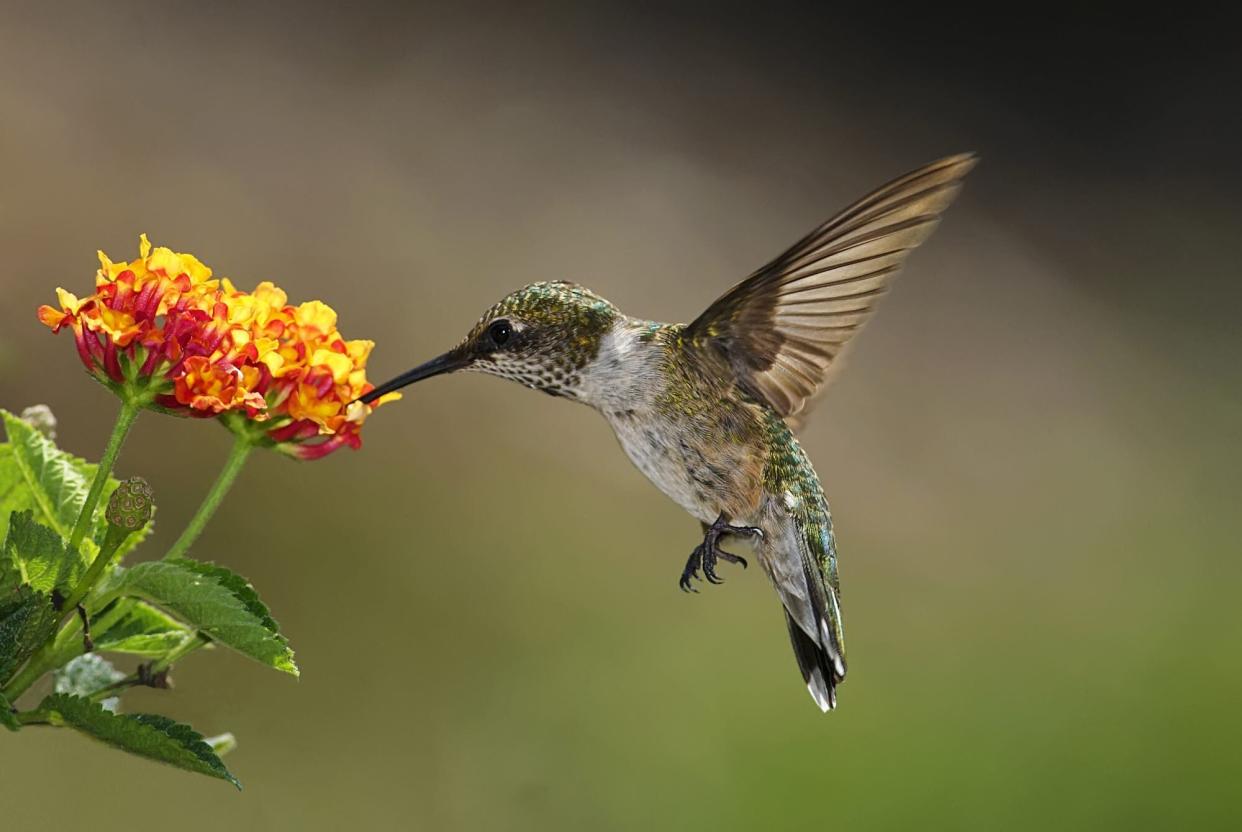Want to Attract Special Birds and Bees to Your Garden? Add Rare Plants to Your Backyard, a New Study Says

DansPhotoArt on flickr / Getty Images
If you love the sight of birds and the thrum of bees in your garden, you're not alone. These pollinators are not only beautiful to behold, but they also boost the health of your plants and flowers during their daily visits.
Luckily, there's a way to welcome particularly special species of birds and bees to your yard: Simply add a few rare plants. According to a new study published in Ecological Applications from researchers from Dartmouth College, urban gardeners who did just that attracted substantially more unique birds and bees, Earth.com reports.
The researchers studied 18 California community gardens in Santa Clara, Santa Cruz, and Monterey counties and found that 50 percent of those located in urban areas included rare plants. The team then created a model that showed the connection between the gardeners, rare plants, and the bird and bee species demographics in those plots.
"There appears to be a cascading effect of people planting uncommon species on the accumulation of other uncommon bee and bird species," said Theresa Ong, the study lead author and an assistant professor of Environmental Studies at Dartmouth. In other words, planting unique greenery drew special, beneficial wildlife to an unexpected area—something that you can replicate in your own yard.
Related: The Best Plants for Attracting Birds and Other Pollinators to Your Garden
Looking for a variety to start with? "Taro (Colocasia esculenta), was one of the rare plants found in the urban gardens but is not of conservation concern, primarily because it's cultivated," Ong said. "It's a traditional crop planted in Hawaii and by a lot of Asian cultures. It requires a lot of space to grow and is cooked for its underground corm, much like the tuber of a sweet potato but it's not a common food grown in California." This unique plant also attracts rare bird and bee species because it thrives in wet environments—so it draws pollinators that wouldn't normally frequent an urban region, Ong said.
She and her team of experts also discovered a link between Bachelor's buttons, also called cornflowers, and increased leafcutting bees; females cut the plants' leaves and make nests for their offspring.
The rare plants found in these gardens are also providing a healthy environment for diminishing bird species, including the American kestrel falcon—the smallest of its kind in North America. "It's a small and very cute falcon that is actually the most common and widespread falcon in the continent. Recently its populations have declined, which has been a cause of concern," said Ong. "It's an important predator of garden pests like mice and voles, so it's a good sign when it is found in some urban gardens. [It] signals that gardens can be managed in a way that provides habitat for a species that is rare in cities."

